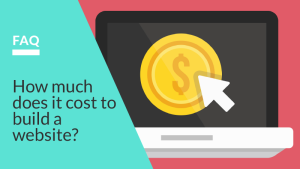— April 6, 2019
Remember that Seinfeld episode where Jerry and Elaine are trying to rent a car, and the agent tells them he doesn’t have the car that Jerry reserved? “See, you know how to take the reservation,” Jerry says to the agent, “but you just don’t know how to hold the reservation, and that’s really the most important part of the reservation—the holding.”
Seinfeld was making fun of the very common frustration faced by all consumers at some point. Namely, that many businesses focus a lot of effort and resources into acquiring new customers, but not on providing the service necessary to create a great start-to-finish customer experience. Once a customer has a negative experience with a business, they’re very unlikely to give them a second chance. The car rental company on Seinfeld was all too happy to make big promises when they were taking Jerry’s reservation, but they couldn’t be bothered to make sure the car he wanted was actually available.
There’s a lesson here for eCommerce businesses: don’t be like that car rental company. Online marketing is becoming increasingly competitive, which results in higher customer acquisition costs. When you’re fortunate enough to land a new customer, it’s more cost-effective to make sure they keep coming back than it is to acquire more new customers.
Taking that notion a step further, it’s even more cost-effective to get them to pay for a recurring service than it is to try to upsell them on additional products. This is why you see many online publishers and other businesses moving to an eCommerce subscription model, where the most important challenge is customer retention. When your business has good customer retention, you avoid the cycle of customer subscription churn.
Let’s look at what subscription churn is, why it’s an important metric, and 8 ways to reduce it in your eCommerce business.
What is Customer Churn?
Churn refers to losing customers who had previously been patronizing your business. Specifically, it can be calculated as a percentage of customers who left during a particular time frame. For example, if you started 2018 with 500 customers and ended it with 470 customers, your churn rate for that year is 6%.
Churn rate can be calculated in other ways, too. For example, you could calculate it based on the value of business lost rather than by number of individual customers. However you arrive at your figures, the goal should be to get your churn rate as low as possible.
Customer Churn: The Most Important Metric for Subscription Services
For any business, keeping an existing customer is cheaper than acquiring a new one. In fact, studies show that reducing customer churn by just 5% can increase profits by as much as 25%. For subscription-based services whose entire business model is built around long-term customer retention, managing churn rate is crucial.
Given that it costs more to acquire new customers than it does to keep the ones you have, trying to keep revenues up by replacing lost customers with new ones is just going to become more and more expensive as your subscription base grows.
If you had a leaky bucket and you needed it to stay full of water, what would make more sense—keep pouring more water into it, or patch up the leak? While the answer might be clear, just how to patch up that hole might be more complex.
8 Methods for Reducing subscription Churn
1. Strong Branding
Companies with strong, effective branding are “stickier” in customers’ minds than companies whose branding efforts are half-baked or forgettable.
Coming up with a comprehensive, unified branding strategy can feel daunting, but it’s worth it. Good branding should include consistency, a sense of purpose, and an appeal to your customers’ emotions. The benefits of solid branding can feel intangible at times, but it’s one of the first things you should consider when you’re looking to build the sense of loyalty and attachment among your customers.
2. A Unique Customer Experience
Your customers’ experience with your service needs to be flawless throughout, but also needs to be unique in a way that’s truly your own. Basically, you want anyone who switches to a different service to feel like something is missing.
As with branding, there’s no simple formula that works for every company. Finding out what it is about your company that nobody else can offer can take some soul-searching, but it’s another key pillar of building a service that customers will really want to stick with.
Keep in mind, that once you have engaged and introduced a customer to your experience you should do whatever you can to reduce friction. Stuff like having a fully responsive website have become obvious in 2019 but most online retailers are usually not even aware of most of the reasons their customers fail to convert.
For example, according to a a recent survey Namogoo conducted among 1,300 online shoppers, 78% of online consumers are exposed to unauthorized ad injections while shopping. These injected ads have been reported to annoy at least 62% of those exposed to them, 55% report they are likely to click these ads and get redirected to a different website, where 80% of them will complete their purchase.
Obviously, this is less than an ideal customer experience and one that can directly impact your conversion and churn rates.
3. Customer Segmentation
When you have a variety of content or products on offer, sometimes you’ll be presenting your subscribers with things they aren’t actually interested in. This can lead them to conclude that your service isn’t really a good fit for them.
First, identify customer segments based on their interests or demographics, then build packages to appeal to those segments. In this way, you can maximize the value you’re providing, while avoiding alienating your customers with offers they don’t care about.
4. Own Your Pricing
When a subscription service loses a customer soon after they sign up, it’s often because that customer didn’t believe they were getting good value for their money. The early onboarding process can be a tenuous time for new customers, since you haven’t yet had a chance to provide quality service and build loyalty. Their initial impressions will have a big influence on whether they think it’s worth staying on as a subscriber or not.
That’s why you absolutely need someone responsible for mapping out and owning the experience of customers who are just starting to use your service or products. The “pricing owner” might find a home on various teams, depending on your type of business, but the most important thing is that someone takes ownership.
5. Answer the Question
It can be tricky to figure out the optimal pricing model for a subscription service. There are many options, and different teams within your company may have different priorities when it comes to pricing.
One question that can provide some guidance and clarification is: why are your customers subscribing? When you can put your customers’ needs first and get inside their heads, that can give you useful insights into what your service should provide and how much to charge for it.
6. Change Your Mindset
Were you always a subscription-based company? Many eCommerce companies start out with a traditional business model, then shift to being subscription-based after some initial trial and error, followed by analytics study. However, not all of these companies adapt their managerial mindset and company culture to reflect this metamorphosis.
If you’ve changed from traditional sales to subscriptions, you are now a totally different business. Once you’ve got your head in the subscription game, you can look for areas where the original business model is still shaping your processes and update them accordingly.
7. Provide Added Value
Nobody wants to feel like they’re just paying for the privilege of being a customer. When you can provide added value and incentives that make subscribers feel like they’re getting access and privileges, and not just buying something, then they’re more likely to feel that they are getting a good deal.
Everybody likes coupons, exclusive offers, and free goodies; but you can also provide added value by including community-building features, knowledge resources, videos, and anything else fun or useful that relates to your product. When customers have a reason to keep coming back to you even when they don’t currently need the service they’re paying for, they’re much more likely to keep their subscriptions active.
8. Get Ahead of Churn
There’s a reason why subscription-based businesses have a harder time winning back churned customers than traditional businesses. In a regular transactional business model, the customer can just passively stop purchasing from you, but canceling a subscription requires active intent—the customer has to explicitly communicate their desire to end the subscription.
Many people, once they’ve consciously made a decision, don’t like going back on it without a good reason. It’s easier to lure those passive transactional customers back than it is to get someone to convince themselves that canceling their subscription wasn’t a great idea after all.
A few of the things you can do to reconnect with customers who are on the verge of churning out are:
- Reach out to customers who haven’t logged on in a while.
- Offer incentives for users whose engagement is starting to taper off.
- Request feedback about what is or isn’t working for them.
Just remember not to oversell, or make promises you can’t keep—after all, do you think Jerry and Elaine would have ever gone back to that same car rental place?
Retention is the #1 Goal
When you’re selling subscriptions, retaining your existing customers is your number one goal. They’re bringing in revenue for as long as you can hold on to them, and it’s unlikely that replacing them will be cheaper than figuring out how to keep them on board.
Using these eight strategies will help you increase your customer retention. When you’re attuned to what your customers need, why they’re signing up with you, and what incentives will keep them hanging around, you can devise an effective overall strategy for dealing with churn.
Digital & Social Articles on Business 2 Community
(33)







